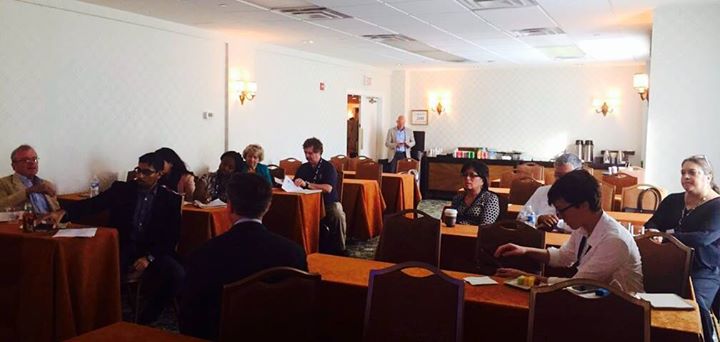One of US/ICOMOS’s 50th anniversary themes is helping diverse American communities tell their stories, in particular by helping US historic preservationists working with these communities find international opportunities for collaboration. We call this project “Pathways to Diversity.” A down payment on this initiative occurred earlier this month during PastForward, the annual conference of the US National Trust for Historic Preservation. US/ICOMOS with the support of the National Park Service hosted a roundtable on US-Mexican heritage collaboration and how to create more international opportunities for those working with Mexican-American heritage.
Much of the planning for the November 6 meeting was done by Ms. Sehba Imtiaz, a graduate student in Historic Preservation doing a fellowship with US/ICOMOS thanks to a partnership between US/ICOMOS and the University of Maryland School of Architecture, Planning and Preservation’s Historic Preservation Program. We asked Sehba to provide her thoughts on the meeting.
Sebha writes:
“Opening remarks were made by Dr. Stephanie Toothman, Associate Director of the National Park Service and Keeper of the National Register, and Professor Luis Hoyos, Cal Poly Ponoma. Discussion were facilitated by Mr. Jake Barrow, Program Director of Cornerstones Community Partnerships; Ms. Julianne Polanco, California State Historic Preservation Officer, and Dr. Stanley Bond, Chief Archaeologist of the National Park Service. Other participants included Sara Delgadillo Cruz of Latinos in Heritage Conservation and Ms. Joan Padilla, Senior Advisor to the Assistant Secretary for Fish and Wildlife and Parks at the Department of the Interior.
Roundtable attendees were invited to participate in an informal discussion, aimed at enhancing bi-national cultural heritage collaboration between United States and Mexican cultural heritage professionals. The goal was to share ideas on ways to establish a more permanent platform for sustaining bi-national collaboration among heritage professionals from a multiplicity of disciplines. The meeting was an opportunity for American heritage professionals to discuss their hopes, goals, and objectives when considering Mexican-American heritage conservation, and bi-national collaborative projects. It was also an exploration of current collaborations of our shared cultural heritage lke historic and contemporary Cultural Routes and conservation of earthen architecture.
Participants were asked to discuss collaborations, initiatives, and projects that are good examples of existing US/Mexican bi-national heritage collaboration. They also were asked to discuss current heritage issues, the resolution of which could benefit from more bi-national collaboration. Finally, participants discussed tools and the use of new technology which could benefit communities and cultural heritage work.
A lively conversation ensued touching on cultural routes, intangible heritage and urban culture, earthen architecture, archeology, and border issues to name just a few. All participants agreed that cultural landscapes and heritage have huge opportunities, especially between various states and municipalities, to provide a different perspective and to tell new stories which can connect the past to the modern Latino diaspora. Participants agreed that there were opportunities to discuss similar challenges faced by communities and professionals on both sides, and by focusing on a multi-regional response, more sensitivity could be provided to a trans-national cultural heritage.”
Many thanks to Sehba and the University of Maryland, to the National Park Service and to all those who participated in the Roundtable! A an even broader conversation based on the results of the Roundtable is planned for 2016.
US/ICOMOS Pathways to Diversity program holds Roundtable on US-Mexico heritage collaboration

